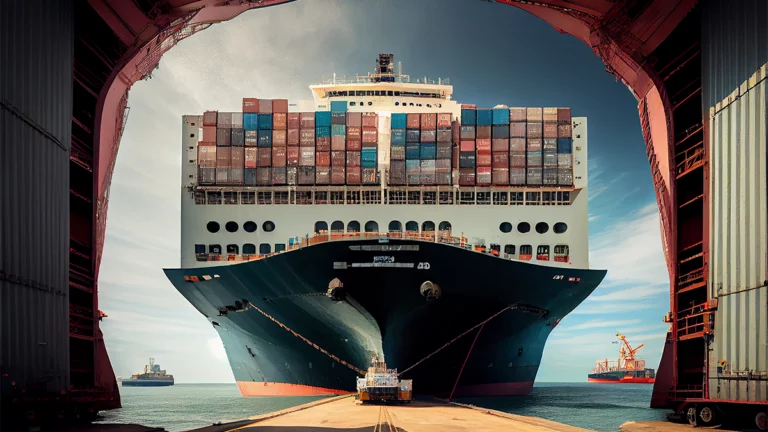Today, many have predicted that the industries will be going drastic changes. In this scenario, the transport industry is the perfect example of grappling with the rapid technological changes and customer expectations. In particular, these are the changes driven by three major trends- electrification, automation, and servitization. There is no wonder why the future trends in transportation will be gaining momentum. You all want to know more about the future trends in transportation. All you have to do is keep reading the article to know more about it.
What are the Roles of These Trends in Transportation:
As we mentioned, the trends, namely- electrification, automation, and servitization, will not only be changing the movement of people but also how the goods are moved. Hence, rapid advancements in transportation will affect businesses regardless of the sectors. This applies to any business with a supply chain that relies on the movement of goods and should be aware of these three trends.
Future Trends in Transportation:
It is now time to look at some of the future trends in transportation that are coming to transform the movement of people and goods. So, keep reading!
Electrification:
We all know that transportation is one of the main causes of emission for greenhouse gases. In the US, transportation generates around 28 percent of total greenhouse gas emissions, which largely come from burning fossil fuels, particularly diesel and gasoline. This is done for running cars, trucks, ships, planes, and trains. In this scenario, the need of the hour is to transition to greener vehicles, where electrification comes in.
When it comes to cars, the popularity of EVs is quite high. As of 2020, EVs have accounted for just 6 percent of global automotive sales. It is projected to grow to 13 percent by 2025 and 22 percent by 2030. With time, stricter national emissions targets, greater urban populations, improvements in charging infrastructure, and the declining cost of the lithium-ion batteries that power EVs (already down 80 percent since 2010) will be combined to encourage mass adoption of EVs.
Let me tell you, folks, that this is not only about cars; Indian ride-sharing company Ola has also massively invested in e-scooters. The company’s e-scooter plan will produce around 10 million electric scooters annually. This will make it the world’s largest e-scooter facility.
Other major companies like Daimler are also investing in e-truck technology. Norway has also been running electric car ferries since 2015, aiming to run an all-electric fleet by 2023.
Autonomous, connected vehicles:
These vehicles provide an opportunity to revolutionize how people and goods are transported. This also includes improving road safety and easing congestion on busy roads. They may be changing the way our cities are built. When you think about it, huge parking lots will be a thing of the past. This will be because of the driverless vehicles, which will be able to drop us at the destination we want to go to and will come back for us later.
This is a cool way of thinking about the future. Let’s know more about it.
Elon Musk has said that the autonomous vehicle technology from Tesla will be capable of Level 5 autonomy – where the vehicle can carry out all driver tasks in any situation – by the end of 2021. However, the representatives at Tesla later said that Musk was exaggerating it a little, and there is no guarantee that the milestone will be met by the end of 2021.
Many automakers are working to achieve Level 4 autonomy, where the vehicles can only drive themselves under certain conditions. This is estimated for over the next few years.
The driverless taxis are already in practice in some parts of the World; Waymo, Alphabet’s autonomous taxi service, launched fully driverless rides for the general public in 2020. And in China, AutoX launched its fully driverless taxis in early 2021.
In the meantime, several companies are developing autonomous trucks, including TuSimple, which is working with UPS to conduct tests in Arizona and Texas. At present, TuSimple trucks will have a driver onboard who will be readily available to start the ride. However, the company was planning to conduct its driverless trials in 2021. It will start selling autonomous trucks in 2024.
Servitization:
This massive trend will affect almost all industries, and mobility is no exception. As the population grows in already densely populated cities, the days of everyone running and owning their cars will be numbered. Additionally, with the rise of ride-sharing services like Uber and Didi Chuxing. Transportation will be much more complex and multi-layered than the traditional private ownership model.
A company like Uber will fall technically under this section. But the MaaS operators of the future will be offering customers multiple mobility options via a single payment channel as well as the interface. You can take the example with a MaaS provider; you could borrow a car for a few hours one day, pick up an e-scooter in town later that day, and hop home on public transport – all via one platform.
The main point here is to access mobility rather than ownership. In the future, it might be possible that the dwellers will never need to win a car. Isn’t it amazing?
With these trends in mind, the future trends in transportation will reach new heights as time passes.
Conclusion:
That’s all, folks. I hope the article helped you in getting all the information you needed.
To get more updates,

















